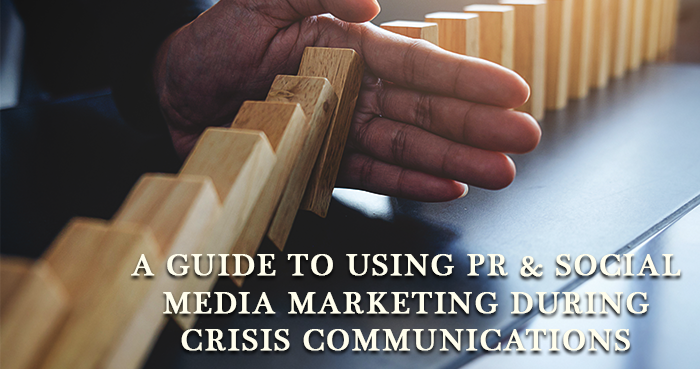A Guide To Using PR And Social Media Marketing During Crisis Communications
The widespread use of social media has essentially transformed the medium through which people communicate and in turn, share information. For professionals and brands looking to bank upon rapid visibility, social media has opened up new avenues, similar to that of a Pandora’s Box. A host of new platforms have risen to publicize content, forge relationships, cultivate engagement and have an intrinsic understanding of the needs of target audiences. However, just like the above mentioned Pandora’s Box, with every good comes the negative- while social media disbanded traditional boundaries, it has brought out an ugly side of over-connectivity, to contend with. This “faux” sense of proximity between brands and consumers has left companies more susceptible to damaging situations.
From slander- worthy reviews on Facebook to leaks of vital proprietary information, today the rate crisis scenarios have increased exponentially as online reputation takes a beating. It is even more damaging owing to the real-time medium of social media as crisis spreads in seconds and crisis management becomes even more difficult. Fortunately, things can be brought under control, with the amalgamation of Public Relations (PR) and Social Media Marketing, coming to the brand’s rescue. Let’s elucidate further on ways to manage crisis via social media: Use Social Media as a Tool for Crisis Monitoring: Social media is known for being a voice of the mass, something that brands can utilize for their reputation management, as well as crisis communications. As consumers are using social media as a forum to express their views, on a daily basis, brands should be on the lookout for sensitive issues, through mass feedback, before they become a crisis in rage. Regular monitoring of social media channels can be certified as the most effective way to spot crisis at its earliest stage, as even traditional media portals rely blindly on social media platforms to scope out scandalizing news.
Build a Social Media Crisis Toolkit: A crisis toolkit is essential for every medium, and social media shouldn’t be left aside here. Encompassing veritable templates such as press releases, prepared statements, authored stories and so on, an effective crisis response toolkit should be utilized to straight away shift the focus while garnering a positive response from both masses and industry insiders. The inclusion of a consistent outline for blog posts, tweets, and other social media platforms can both supplement and streamline any brand’s crisis response efforts. Establish a Framework for Response: Given the stage of emergency the crisis entails, a framework for a response should be drafted. This could contain a blueprint of what, where and how to answer. A fixed, neutral tone should be utilized throughout all the organizational communications, with words crafted with utmost certainty. The intent of the message should reflect out while disseminating.
Also, the deciding channel of the social medium is very importance- sometimes a pictorial message over Instagram can be more impactful than a LinkedIn blog and we all know the potency of a meager Tweet. The social media dashboard should be tuned in accordance, to disseminate according to pre-fixed slots. This aids in simplifying crisis management while ironing out random, iffy situations that may arise at the last moment. Conclusion For those brands who are splitting their strands over how to manage the crisis, the above tip acts as a comprehensive leeway towards easing situations over proactive measures.
TAGS: Crisis management, Thought leadership, Digital media landscape



Comments (0)